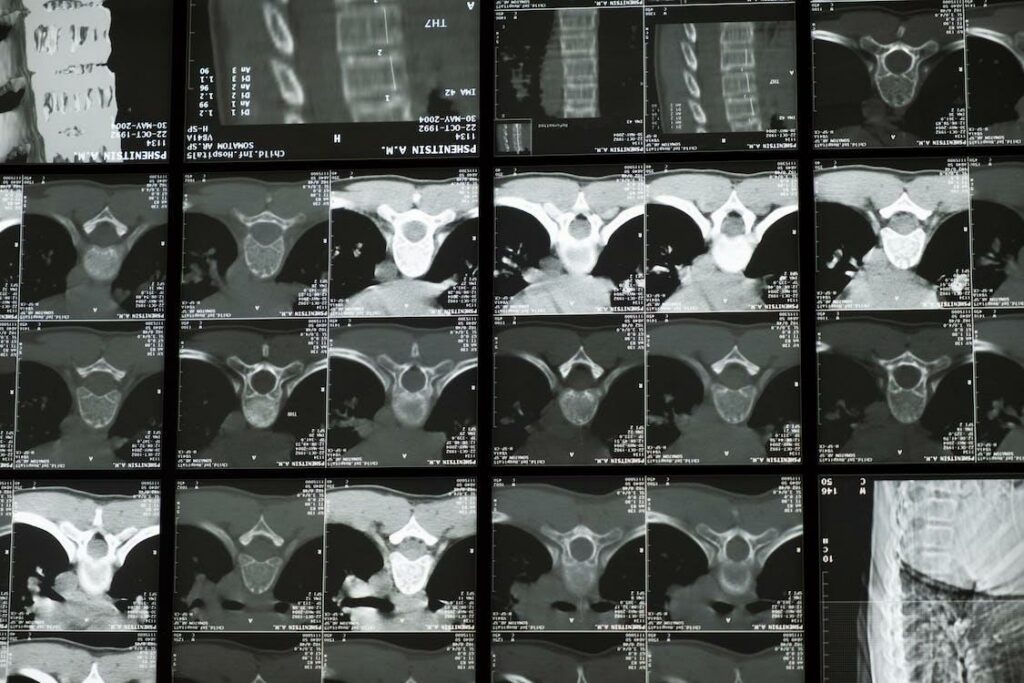Quantum AI’s Leap in Medical Imaging is ushering in a new era of innovation and advancements in healthcare. By combining the power of quantum computing and artificial intelligence, researchers and scientists are revolutionizing the field of medical imaging, leading to enhanced diagnostics, improved patient care, and potentially life-saving discoveries.
Understanding Quantum AI
Before we delve into the implications of Quantum AI in medical imaging, let’s first understand the basics of quantum computing. Traditional computers use bits to represent information, which can either be a 0 or a 1. In contrast, quantum computers use quantum bits, or qubits, which can exist in multiple states simultaneously, thanks to a phenomenon known as superposition. This allows quantum computers to process and analyze vast amounts of data at an unprecedented speed.
Artificial intelligence, on the other hand, involves the development of algorithms and systems that can perform tasks that typically require human intelligence. Machine learning, a subset of AI, enables systems to learn from data and improve their performance over time without explicit programming.
The Basics of Quantum Computing
Quantum computing is based on the principles of quantum mechanics, a branch of physics that describes the behavior of matter and energy at the smallest scales. At the heart of quantum computing are qubits, which are quantum particles that can be in multiple states at the same time due to superposition.
Superposition allows quantum computers to solve complex problems by considering all possible solutions simultaneously. This parallel processing capability gives quantum computers the potential to perform certain computations exponentially faster than classical computers, making them ideal for tackling complex medical imaging tasks.
How AI Integrates with Quantum Computing
Artificial intelligence complements quantum computing by providing the algorithms and tools necessary to extract meaningful information from the vast amount of data processed by quantum computers. AI algorithms can analyze medical imaging data to identify patterns, make predictions, and assist healthcare professionals in making accurate diagnoses.
Machine learning algorithms, particularly deep learning techniques, have proven to be highly effective in medical imaging analysis. By training these algorithms on large datasets, they can learn to recognize abnormalities, detect early signs of diseases, and provide valuable insights to support medical decision-making.
The Evolution of Medical Imaging
Medical imaging has come a long way since its inception. From the early days of X-ray technology to the advancements in MRI and CT scans, medical imaging has played a crucial role in diagnosing and monitoring diseases. However, there are still challenges that need to be addressed.
Traditional Methods of Medical Imaging
Conventional medical imaging techniques, such as X-ray, MRI, and CT scans, have limitations in terms of resolution, sensitivity, and specificity. For instance, X-rays can provide detailed images of bones but may not be as effective in visualizing soft tissues. MRI and CT scans, although more versatile, can be time-consuming and expensive.
Moreover, interpretation of medical images often relies on the expertise of radiologists, which can introduce inter-observer variability and subjectivity to the diagnostic process. This is where the combination of Quantum AI and medical imaging holds immense potential.
The Rise of AI in Medical Imaging
With the advent of AI, medical imaging has seen significant advancements in recent years. AI algorithms can analyze medical images with remarkable accuracy and speed, assisting radiologists in detecting abnormalities and making more precise diagnoses.
In fact, studies have shown that AI algorithms can outperform human radiologists in the detection of certain conditions, such as lung cancer and breast cancer. This has led to improved patient outcomes and reduced healthcare costs, making AI a valuable tool in the field of medical imaging.
Quantum AI in Medical Imaging: A Game Changer
The integration of Quantum ai in medical imaging has the potential to revolutionize the field and address some of the existing challenges. By harnessing the power of quantum computing, Quantum AI can overcome the limitations of traditional imaging techniques and enhance diagnostic capabilities.
The Potential of Quantum AI in Medical Imaging
Quantum AI can significantly improve image resolution, allowing healthcare professionals to visualize anatomical structures with unprecedented clarity. This can enable early detection of diseases and more accurate assessment of treatment efficacy.
Additionally, the parallel processing capabilities of quantum computers can accelerate image reconstruction and analysis, reducing the time required for diagnostic procedures. This can lead to faster diagnoses, more efficient workflows, and ultimately better patient outcomes.
Challenges and Solutions in Implementing Quantum AI
While the potential benefits of Quantum AI in medical imaging are immense, there are challenges that need to be overcome for widespread implementation. Quantum computers are still in the early stages of development and are not yet readily available for everyday use.
However, collaborations between quantum computing companies and healthcare institutions are already underway to bridge this gap. Efforts are being made to develop quantum algorithms specifically designed for medical imaging tasks and to optimize the use of existing quantum computing hardware.
The Impact of Quantum AI on Healthcare
Quantum AI is poised to have a transformative impact on the healthcare industry as a whole. By improving diagnosis and treatment planning, Quantum AI can help save lives and reduce healthcare costs. Let’s explore some specific areas where Quantum AI is making a significant difference.
Improving Diagnosis with Quantum AI
One of the primary applications of Quantum AI in healthcare is enhancing the accuracy and speed of disease diagnosis. By analyzing medical images with advanced AI algorithms running on quantum computers, doctors can detect subtle abnormalities and identify early signs of diseases that might otherwise go unnoticed.
For example, in the case of cancer diagnosis, Quantum AI can aid in the identification of malignant tumors at an early stage, increasing the chances of successful treatment. By enabling precise and timely diagnoses, Quantum AI has the potential to save lives and improve patient outcomes.
Quantum AI and Patient Care
Quantum AI not only benefits diagnosis but also enhances patient care throughout the healthcare journey. By optimizing treatment plans based on individual patient data, Quantum AI can personalize and tailor treatments to specific needs.
Furthermore, the integration of Quantum AI with medical imaging allows for real-time monitoring of treatment effectiveness and disease progression. This can help healthcare professionals make data-driven decisions and adjust treatment strategies accordingly, leading to improved patient care and outcomes.
The Future of Quantum AI in Medical Imaging
As Quantum AI continues to evolve, the future holds tremendous promise for further advancements in medical imaging. Emerging trends and ongoing research are shaping the way Quantum AI will transform the field.
Emerging Trends in Quantum AI
Researchers are actively exploring novel applications of Quantum AI in medical imaging. For instance, the combination of Quantum AI with advanced imaging techniques, such as positron emission tomography (PET) and single-photon emission computed tomography (SPECT), holds the potential to revolutionize molecular imaging and enable non-invasive visualization of cellular processes.
Advancements in Quantum AI algorithms and hardware are also expected to drive further breakthroughs in image analysis, enabling more accurate identification of subtle abnormalities and the development of predictive models for disease progression.
Potential Developments and Innovations
The integration of Quantum AI with medical imaging is a rapidly evolving field, with ongoing research and development paving the way for future innovations. Researchers are exploring the use of quantum machine learning algorithms that can adapt and learn from new data in real-time, further enhancing their diagnostic capabilities.
Beyond diagnostics, Quantum AI has the potential to enable personalized medicine by analyzing genomic data, creating customized treatment plans, and predicting individual response to therapies. This could revolutionize the way diseases are diagnosed, treated, and managed, leading to more targeted and effective healthcare interventions.
In conclusion, Quantum AI’s Leap in Medical Imaging is revolutionizing healthcare by combining the power of quantum computing and artificial intelligence. From improving diagnosis and patient care to shaping the future of medical imaging, Quantum AI offers endless possibilities for innovation and transformation in the field. As researchers continue to push the boundaries of Quantum AI, we can look forward to a healthcare landscape that is more precise, efficient, and personalized than ever before.







